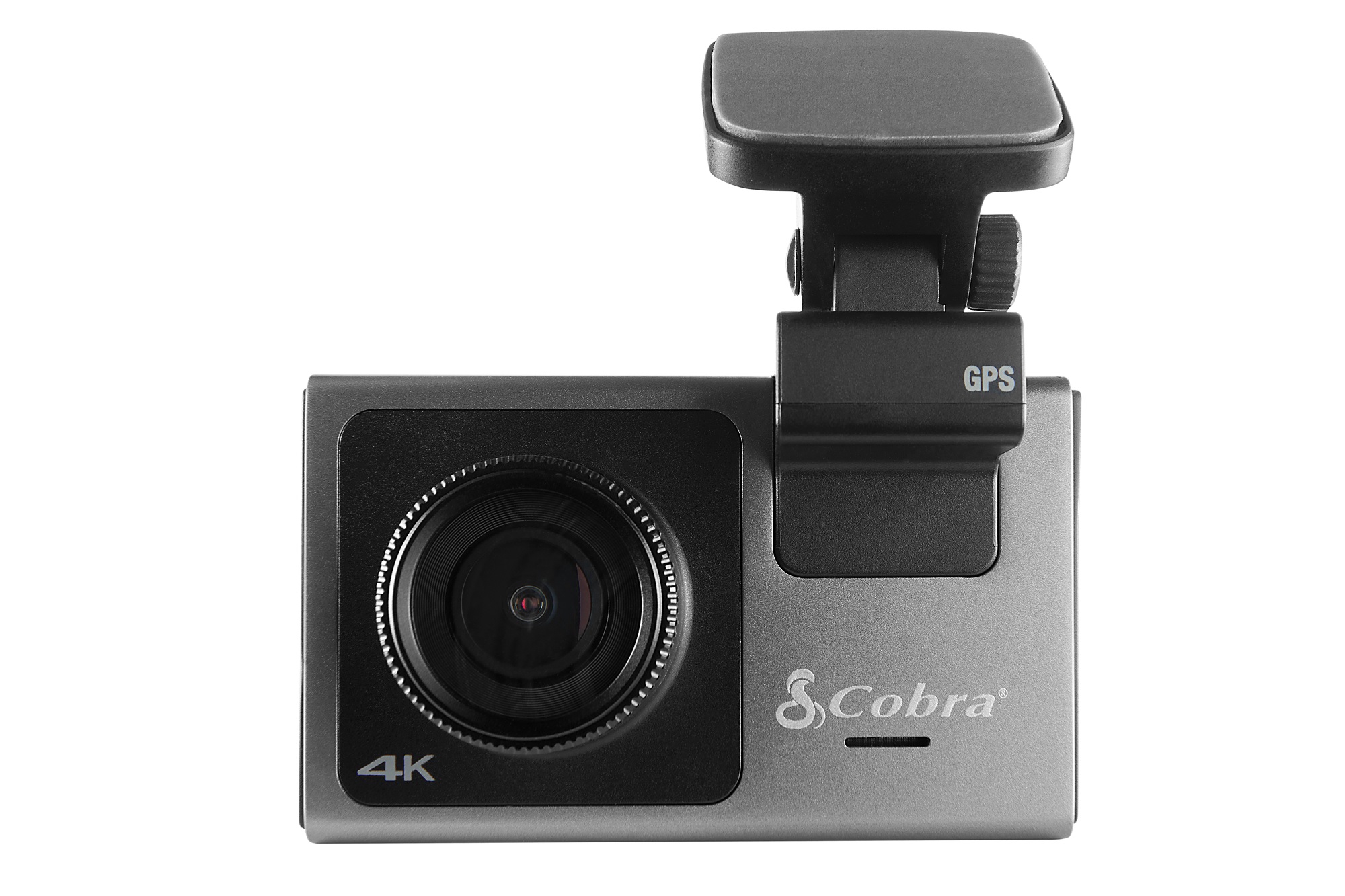 At a glance
At a glanceExpert's Rating
Pros
- Compact, fully integrated design
- Very affordable for 4K with GPS
- Friendly voice notifications
- 64GB of internal storage
- Good day and night captures
Cons
- Internal storage isn’t replaceable
- macOS won’t read the internal storage
Our Verdict
This is an excellent dash cam for the price, with first-rate 4K UHD day and night captures, GPS, and 64GB of internal storage. We also like the friendly voice notifications.
Best Prices Today: Miofive 4K dash cam
It’s hard not to like a dash cam that clearly enunciates the friendly greeting, “Miofive is here for you!” when it first powers up. Though perhaps a little presumptuous, it turns out to be the harbinger of a very good dash cam for a very nice price—$150 for 4K captures with GPS.
This review is part of our ongoing roundup of the best dash cams. Go there for more reviews and buying advice.
Miofive 4K Dash Cam: Design and features
One of the things I very much like about the Miofive dash cam is that you simply mount it on your windshield, key the ignition, and voila—you’re up and recording. In a world of dash cams that want you to connect via an app, then insert and format a SD card before getting any action, that’s refreshing. That said, there is an app and it’s nicely organized and handy.
The Miofive is a front-only, WDR (Wide Dynamic Range—rich color) 4K UHD (3840×2160/Sony IMX450 sensor) dash cam with a 140 degree field of view, and 64GB of internal storage. That latter feature is convenient, and Miofive claims that as an embedded multimedia card (eMMC) it lasts 10 times as long as standard SD card NAND, but it will still eventually wear out.
To that end, you could step down the resolution to extend storage life.

Physically, the Miofive’s main body is a long rectangle (116 x 60 x 55 mm) that attaches to its GPS mount via a permanent pivot. There’s no horizontal adjustment, so level it when you attach it to the windshield. The entire assembly slides up and off the actual sticky mount.
Unusually, the Miofive has only one physical button—a multi-function power button. However, if you look very closely at the back of the camera, there are three small dots to the right of the 2.2-inch color display that simulate button presses electrostatically, allowing you to configure and control the camera locally.
As the 64GB of storage is embedded, and not a removable SD card, you either need to download videos to your phone, or connect the Miofive to your computer via USB to access video locally. Alas, the cable Miofive includes is for charging only (these should be banned!), so you’ll need to provide a data-capable cable yourself for the former, far-quicker method.
Also, macOS did not like the Miofive, saying that the disk was not readable despite identifying it as exFAT. Even after reformatting using macOS’s Disk Utility. Windows had no issues reading the Miofive.
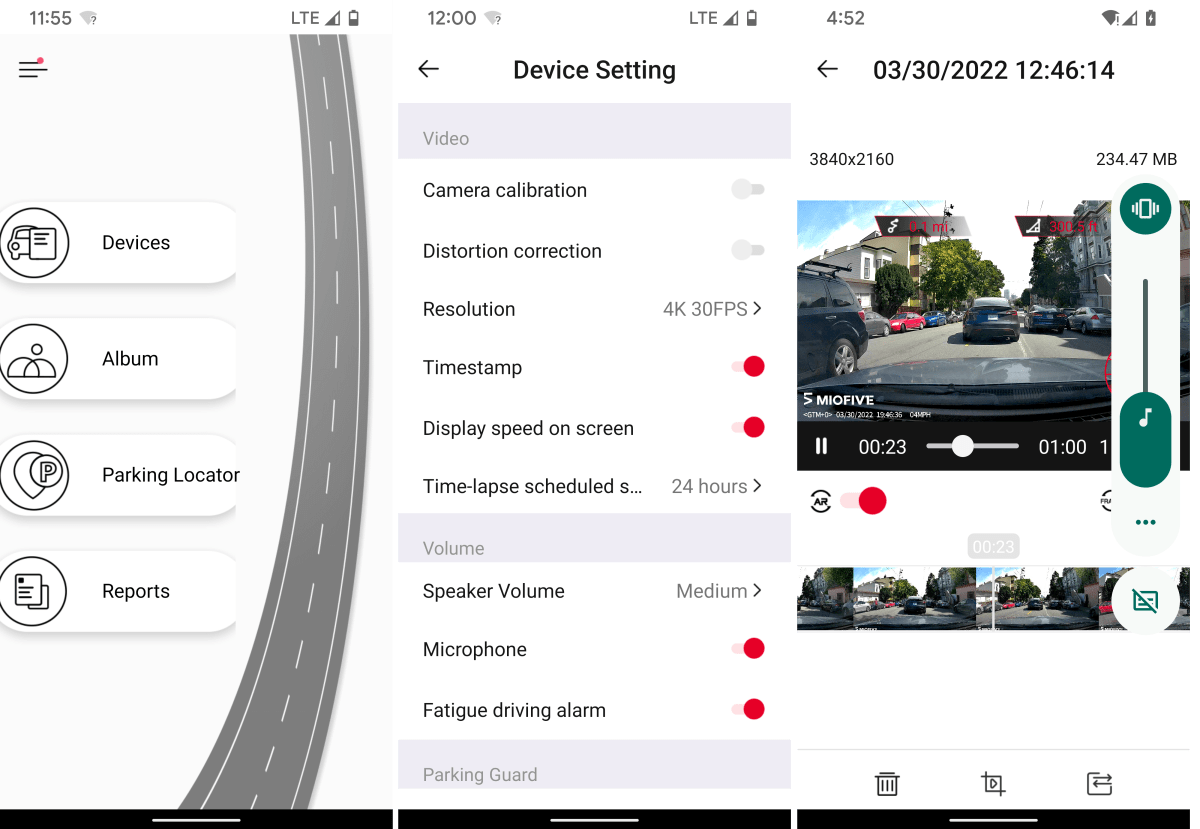
Miofive’s driver assist features include a “the traffic in front of you is moving” alert and a fatigue alarm that will bug you at set intervals. There’s also a parking mode, where the camera wakes up and records if the g-sensor is disturbed in any way.
Miofive 4K Dash Cam: Performance
The Miofive’s captures are very good, both day and night. They’re not quite on par with the Cobra SC 400D’s, but few are, and the Miofive is $250 cheaper than our favorite three-channel dash cam. There is a bit of fisheye from the 140 FOV lens, but it’s handled well at normal eye height, and you can still catch details in the periphery.
Note that the times shown in the captures are out of whack. While the GPS set the universal date and time, it failed to determine the proper time zone from the coordinates at first. This may have been fixed by a firmware update, or subsequent connection with the phone app, as the Miofive now displays the correct time.
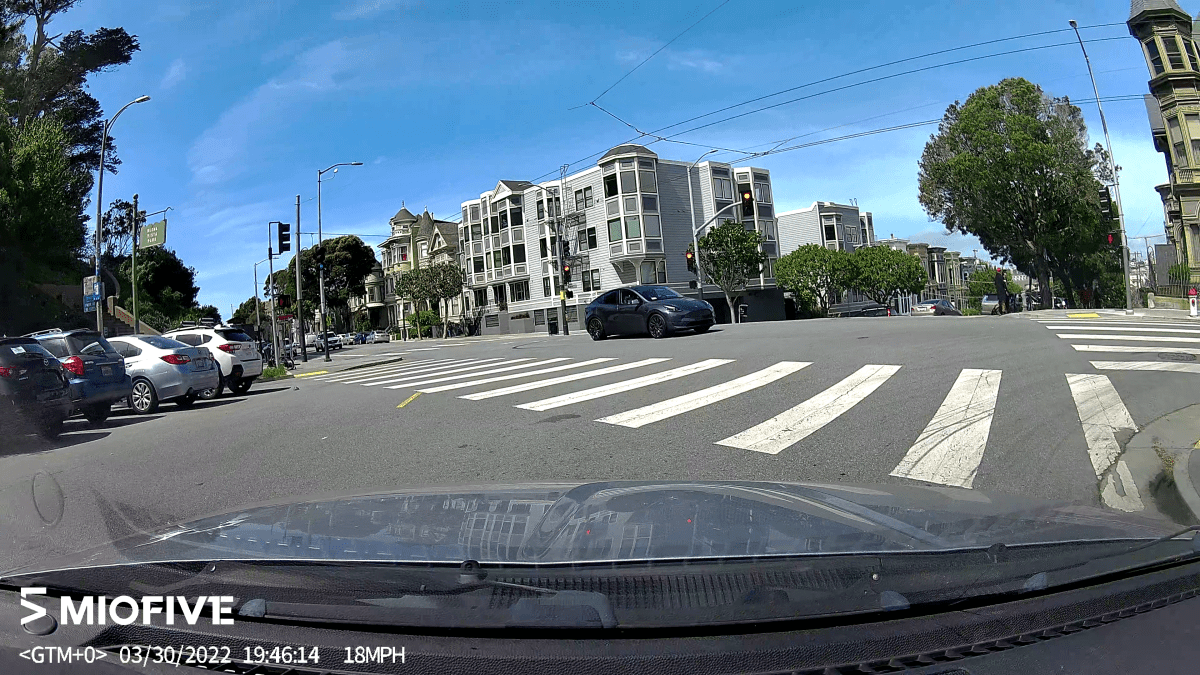
The day captures handle differences in light quite well. You can still read the street cleaning sign on the right, while the license plates on the left (if close enough) are also legible. In the image below, these are a bit farther away so not necessarily readable.
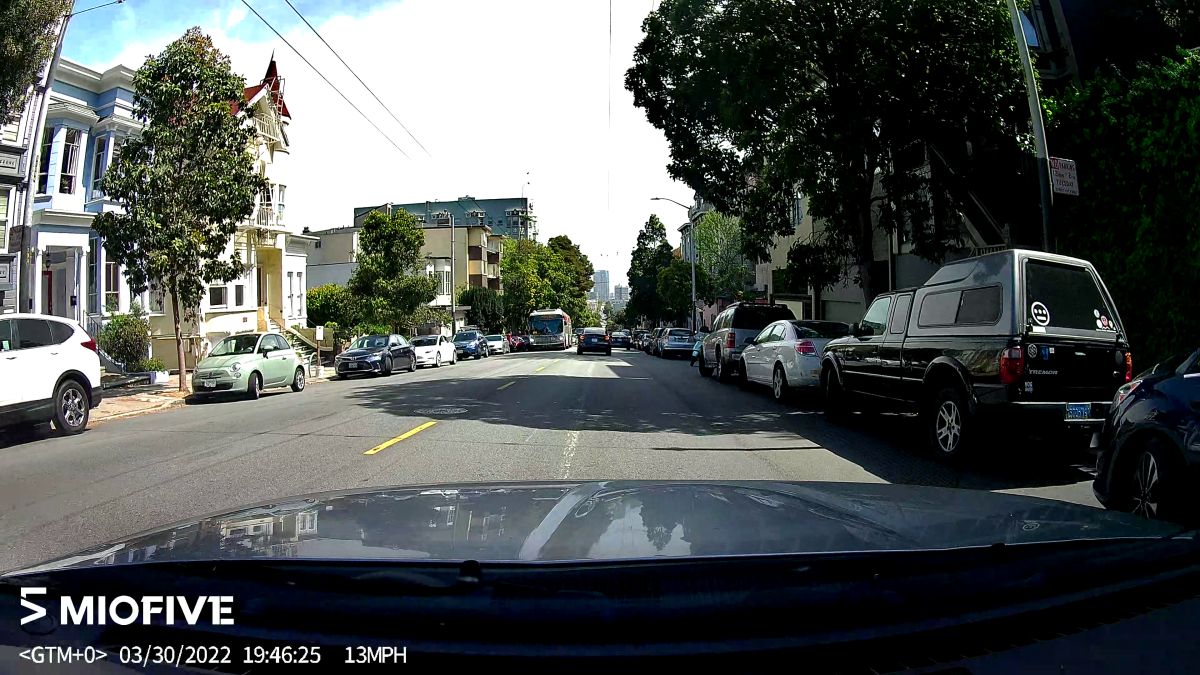
It wasn’t completely dark in the capture below, but it was easily dark enough for testing. Take this image and brighten it and you’ll see all the detail you need. Also note how well it handled headlights pointed almost directly at the camera.
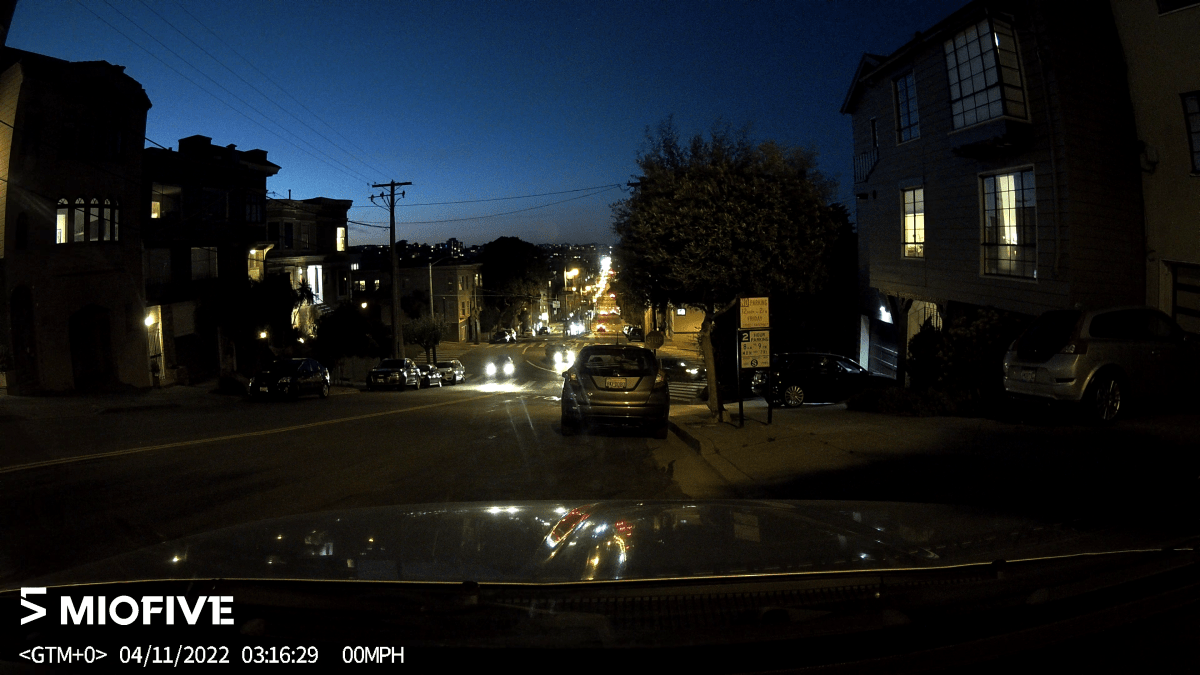
There’s little to nothing to complain about with the Miofive’s recordings. There’s a 500mAh battery on hand that will power the camera if the 12-volt battery is compromised, as it might be if your electrical system is damaged in an accident. In my testing, it lasted a good 10 seconds beyond power off.
Miofive 4K Dash Cam: Final thoughts
There’s no arguing with the Miofive’s capture quality, ease of use, features, or styling. I quite like the product. The internal storage allows for seamless setup and operation, and hopefully will last you a few years at least. If not, Miofive says it will replace the camera, though there’s no mention of whether that will happen outside the 18-month warranty.





